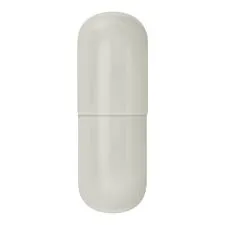
ágú . 07, 2024 06:45 Back to list
Exploring the Factors Influencing the Solubility of HPMC in Various Solvent Systems
Understanding HPMC Solubility A Key Factor in Pharmaceutical Formulations
Hydroxypropyl methylcellulose (HPMC) is a widely used polymer in pharmaceutical formulations, primarily due to its unique properties that enhance drug delivery systems. Its solubility characteristics play a crucial role in determining the efficacy and stability of drug products. In this article, we will explore the significance of HPMC solubility and its implications in various pharmaceutical applications.
What is HPMC?
HPMC is a semi-synthetic polymer derived from cellulose. It is non-ionic, biodegradable, and extensively utilized in the pharmaceutical industry for its ability to modify viscosity, stabilize emulsions, and serve as a controlled-release agent. The degree of hydroxypropyl and methoxy substitution in HPMC influences its solubility, viscosity, and gelling properties, making it versatile for diverse applications, including tablet coatings, suspensions, and gels.
Solubility Characteristics of HPMC
HPMC is soluble in cold water but is generally insoluble in organic solvents. This makes it particularly useful in aqueous formulations, as it can readily dissolve to form a transparent gel or viscous solution. The solubility of HPMC varies based on its molecular weight and the ratio of hydroxypropyl to methoxy groups. Lower molecular weight HPMC grades tend to dissolve more quickly than higher molecular weight grades, which may require additional agitation or heat to achieve full dissolution.
The pH and temperature of the aqueous environment also influence HPMC solubility. Typically, HPMC exhibits excellent solubility and stability in neutral to slightly alkaline conditions, which is desirable in many pharmaceutical formulations. However, extreme pH levels can adversely affect its solubilization and gelling ability, necessitating careful formulation considerations.
Importance of HPMC Solubility in Formulations
hpmc solubility

The solubility of HPMC directly impacts the release profile of active pharmaceutical ingredients (APIs). In drug formulations, HPMC can serve as a matrix-forming agent, controlling the rate at which a drug is released. For sustained-release formulations, a higher viscosity grade of HPMC may be employed to slow down the diffusion of the API through the matrix, resulting in prolonged therapeutic effects.
Moreover, HPMC's solubility characteristics are pivotal in ensuring that the APIs remain evenly dispersed within the formulation. This is crucial for maintaining consistent dosing and enhancing bioavailability. Variability in solubility can lead to fluctuations in drug release rates, which can compromise safety and efficacy.
Application in Various Pharmaceutical Forms
HPMC is not just limited to solid dosage forms; its solubility properties also lend themselves well to a broad range of pharmaceutical applications. In oral liquid formulations, HPMC aids in stabilizing suspensions and enhancing the mouthfeel of syrups. Its film-forming ability makes it an excellent choice for coating tablets, protecting them from environmental factors while masking unpleasant tastes.
Additionally, HPMC is increasingly being explored in advanced drug delivery systems, such as nanoparticles and hydrogels. These innovative systems benefit from HPMC's controlled release features, allowing for targeted therapies and improved patient compliance.
Conclusion
In summary, the solubility of HPMC is a fundamental aspect that influences drug formulation and efficacy. Its ability to dissolve in aqueous environments while providing viscosity and stability makes it a vital component in the pharmaceutical industry. Understanding its solubility characteristics enables formulators to leverage its benefits effectively, thereby enhancing drug delivery systems and ultimately improving patient outcomes. As research continues to evolve, HPMC's role in innovative pharmaceutical formulations is likely to expand, reinforcing its importance in drug development and manufacturing.
-
Unlocking the Benefits of HPMC Products: A Gateway to Versatile Applications
NewsAug.07,2025
-
Unleashing the Potential of HPMC Ashland: A Comprehensive Look
NewsAug.07,2025
-
Tile Bonding Cellulose: The Key to Superior Adhesion and Durability
NewsAug.07,2025
-
Hydroxypropyl Methylcellulose Powder: The Versatile Component in Modern Pharmaceuticals
NewsAug.07,2025
-
Hydroxyethyl Cellulose: The Versatile Solution for Various Industries
NewsAug.07,2025
-
Hydroxyethyl Cellulose (HEC): The Versatile Polymer for Various Applications
NewsAug.07,2025







